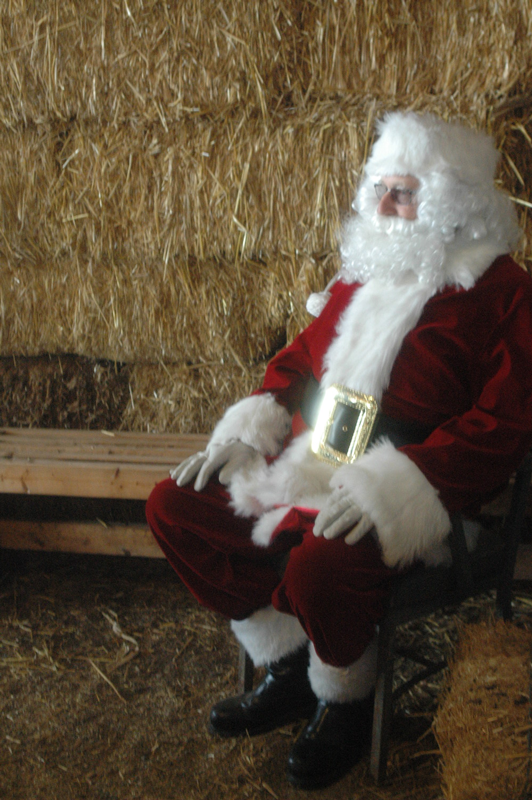Playing Santa is Sometimes Hard
Originally posted on December 19, 2012 by Nora Thompson, Executive Director
When my daughter Kate (who suffered a brain injury at age 2) was young, we’d go see Santa and take the annual picture. Positioning her on his lap, wiping any drool away, and maybe even getting her to smile meant we had to find the really patient Santa and go when there wasn’t a line of other kids waiting. I knew exactly which mall had that good Santa. Kate wasn’t verbal, so at least she didn’t have a long list for him.
Let’s talk about that Christmas list for a bit. Most kids, by the time they are 3 or 4 years old, have this whole “presents” thing mastered. They’re able to rattle off an amazing litany of toys with very specific requirements. Even if they won’t sit on Santa’s lap and tell him item by item what they really, really, really want, lists are made and letters to the North Pole are sent. In other words, most parents have a pretty clear idea that, come Christmas morning, the toys waiting under the tree will be a hit.
However, when you have a child with special needs — especially one who scores well below the norm in expressive language skills — it’s hard to know what to shop for at Christmas. Should we get age-appropriate toys? That’s much tougher as the child gets older and the options decrease. Should we look at toys or activities that promote development? Can’t I just get her a stupid Barbie? That’s what her sister wanted at that age.
I clearly remember trips to toy stores at Christmas, walking up and down the aisles, trying to find something that might make Kate’s eyes light up on Christmas morning, just like my other kids. Many times, I left those stores in tears with another stuffed animal to add to her ridiculously enormous collection, or with another silly toy that could be adapted with a switch she could hit to activate light and sounds. Batteries were never included, so a $7.95 toy wound up costing $49.95 by the time it was adapted and fed four D batteries practically every day. Did she enjoy those toys? I guess so. Did they make her holiday bright? I have no idea.

When Kate’s grandparents, aunts and uncles, or siblings asked us for gift suggestions, we couldn’t help them. No, I needed those rare ideas for myself. Another wrinkle: Kate’s birthday was in mid-November, so if we scored on her birthday, Christmas became that much harder.
Spoiler Alert: This is not one of those inspirational holiday posts where the true meaning of Christmas is revealed. I know that in the grand scheme of things, gifts are not what makes a Christmas good or crummy. I also know that my daughter was truly loved. But playing Santa and watching your children open presents that make them squeal is one of those moments that makes being a parent so rewarding.
For most families, after the flurry of wrapping paper settles, the happy shouts die down, the missing instructions (or the tiny but important piece that accidentally got wadded up with the wrapping paper) are found, many of those toys come to sit in the corner, ignored or forgotten, once the newness wears off. I guess we just skipped a few of those steps with Kate.
Kate passed away at the age of 26. I miss her terribly every day. Do I miss the frustration and challenge of finding the perfect Christmas present? You bet I do.
